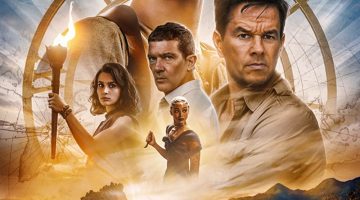
Photos courtesy of University of Nevada, Reno Special Collections Department
The above photos illustrate the changing landscape of Pyramid Lake over a period of over 100 years. The photo on the left was taken by Timothy O’Sullivan in 1867, and was one of the first to document western landscapes. The photo on the right was taken by Mark Klett in 1979 as part of the rephotographic survey project of 1979.
By Breanna Denney
Since last November, the walls of the Matthewson-IGT Knowledge Center have displayed landscapes of the West. To passersby, the photos themselves are unassuming and seem vaguely familiar; but that’s exactly the point the photographers are trying to make.
“Nevada in Time: Photographs of a Changing Landscape,” is a project encompassing five photographers that seek to expand upon the roles that landscape and space play in our lives. While the photos in the collection seem familiar, beneath the surface the collection of photographs explores the fundamental difference between a space and a place.
The difference, according to photographer Peter Goin whose series “Stopping Time: A Rephotographic Survey of Lake Tahoe” is a part of the exhibition, can be attributed to the memories and emotions that people connect to the spaces.
“In the conquest of the West we didn’t have [evidence of historical civilizations],” said Goin during the exhibit’s accompanying forum “Photography, History and the Power of Observation” on Thursday, Feb. 12. “We idealized and turned the American West into a sense of place, where our history was connected to the landscape and open spaces, not so much to human history. It created this tremendous tradition of defining ourselves in relationship to place.”
The relationship between identity and place is exactly what UNR Special Collections Department curator Kimberly Roberts wanted to focus on when organizing the exhibit. The exhibit is an all-encompassing display spanning floors two through four of the Knowledge Center. The exhibition will continue through mid-March 2015.
In defining the relationship, Roberts selected photographers Stephen Davis with “Childhood Memory and Sense of Place” and “Truckee Meadows Open Lands Project”; Jack Hursh with “Nevada Historic Barn and Ranch Architecture”; Peter Goin with selected images from “Stopping Time: A Rephotographic Survey of Lake Tahoe”; Mark Klett with “Rephotographic Survey”; and Howard Goldbaum with “American Flat” as well as historical photos from Special Collections.
“A lot of the historical photos are accidents,” Roberts said. “There’s a lot of talk in visual theory, that a photograph is capturing this accidental moment that then becomes a historic record. It might be something totally unintended in the photograph. But [Davis, Hursh, Goin, Klett and Goldbaum] are all photographers with intention.”
The intent of combining the historic with the contemporary tells the story of Northern Nevada’s landscape as well as that of its people.
In particular, Davis focused on the stories and emotions that location evokes through his series “Childhood Memory and Sense of Place.” In it, Davis collects childhood stories and overlays them onto a photograph of the place where they occurred. The comparison of these two components creates a technique called rephotography with the story taking place before the photograph is taken.
“I think that change is something that proceeds so slowly that we’re not aware of it in our own lives,” Davis said. “I think that people should think about their own experiences, their childhood memories about the places that are really important to them. I hope when people look at this work, it begins to get them to look at their own memories and their own personal experiences.”
Davis’ concept is similar to those of Goin and Klett, whose displayed works are also rephotography projects. The difference is that their rephotography is focused strictly on landscapes that illustrates the mark that humans make upon the land.
“We create things that we can’t really know what will survive and what will endure and after all this is the human experience,” Goin said. “We look back through history and it is these representations that define us.”
Mankind is not only defined by these historical representations, but archiving the changes that happen in the world.
“That which survives creates history,” Goin said.
Goin’s sentiment is echoed by both curators and photographers in hopes that the exhibit will change the way people look at history.
“After the event I had this older woman who came up to me and said ‘I feel like I’ve just had my eyes closed all this time’ and I would say that was the message I was trying to get across,” Roberts said. “Just look at the world around you. You don’t have to change the world to be a part of history. It’s in your daily life and the things you do. It’s in the photographs.”
Breanna Denney can be reached at bdenney@sagebrush.unr.edu and on Twitter @TheSagebrush.











